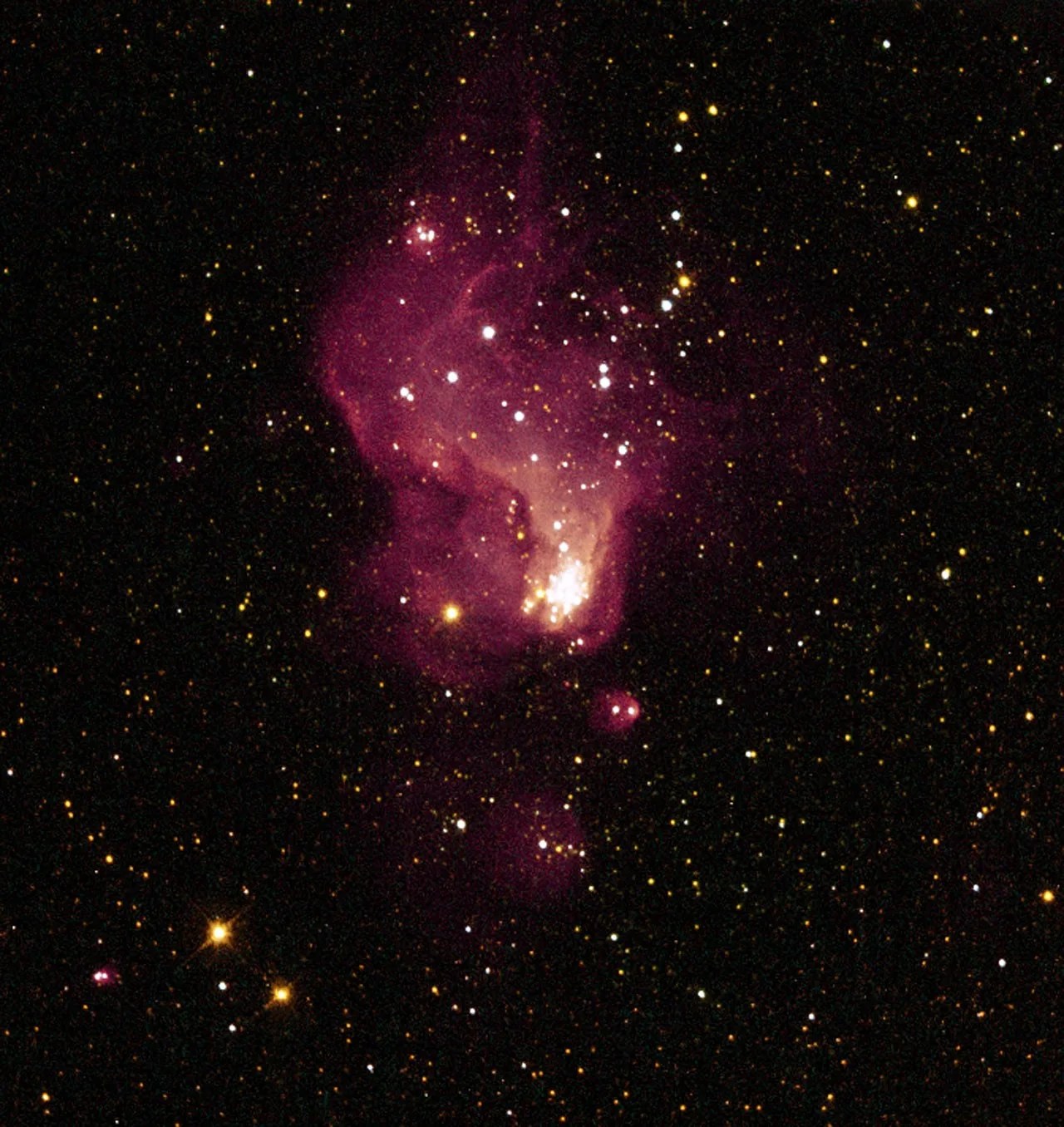Caldwell 57
Also called NGC 6822, this galaxy was discovered in 1884 by American astronomer E. E. Barnard and is often called Barnard’s galaxy.
Distance
2 million light-years
Apparent Magnitude
8.8
constellation
Sagittarius
object type
Irregular Dwarf Galaxy

More than 2 million light-years away, still within our corner of the cosmos, lies the irregular dwarf galaxy Caldwell 57 (C57). Also cataloged as NGC 6822, this galaxy was discovered in 1884 by American astronomer E. E. Barnard and is often called Barnard’s galaxy. Astronomer Edwin Hubble used the 100-inch telescope at California’s Mount Wilson Observatory to make the first detailed photographic investigation of C57 in 1925.


This Hubble Space Telescope image shows a field of stars in the galaxy’s outskirts. The galaxy’s center is out of the frame, toward the upper left. The image was taken with the Wide Field Channel on Hubble’s Advanced Camera for Surveys, which uses two detector chips that have a space between them, leaving a long, dark gap in the image. Astronomers made these observations to study C57’s stellar populations in an effort to better understand the galaxy’s history of star formation and the evolution of dwarf galaxies.
Other Hubble observations of C57 have targeted large stellar nurseries within the galaxy called Hubble-V and Hubble-X. Both clouds contain stars that are much younger, brighter, and more massive than our Sun. Massive stars like these are especially interesting because life wouldn’t be possible without them — in fact, planets wouldn’t even exist for life to live on. The elements needed are forged in these massive stars.
Low- and medium-mass stars, like our Sun, generate energy by fusing hydrogen atoms into helium. If these were the only stars, the universe would be full of gas; it would lack rock and metal that builds up to form planets. More massive stars, however, produce heavier elements. They are responsible for creating all the existing oxygen, carbon, nitrogen, silicon, calcium, and other life-sustaining elements we require. When massive stars reach the end of their lives, they release these elements into the cosmos through a supernova explosion. Even in death these stars are contributing to a new birth, as many elements can only be produced in supernovae.
Using Hubble’s observations of Hubble-V, scientists were able to pinpoint individual stars in that crowded region as well as measure brightnesses and temperatures of the stars. Their analysis has provided a better understanding of the populations of stars inside the cloud.
Caldwell 57 is located in the constellation Sagittarius. It has a magnitude of 8.8, and while it can be seen through binoculars at a dark site, the galaxy is best viewed through a telescope fitted with a deep-sky filter. From the Northern Hemisphere, late summer skies will provide an optimal view, though C57 will appear somewhat low in the southern night sky. It will appear high in the winter skies from the Southern Hemisphere. The galaxy is less than impressive even in large telescopes, resembling a dusty fingerprint more than the cosmic collection of fiery star systems it really is.
For more information about Hubble’s observations of Caldwell 57, see:
A Giant Star Factory in Neighboring Galaxy NGC 6822
‘X’ Marks the Spot: Hubble Sees the Glow of Star Formation in a Neighbor Galaxy



Glossary
Dwarf Galaxy - A small, faint galaxy with only millions to a few billion stars.
Irregular Galaxy - A galaxy that lacks a defined shape and structure.
Magnitude - The brightness of an astronomical object, represented by a number; bright objects have low numbers on the magnitude scale, while dim objects have high numbers.
Nebula - An interstellar cloud of dust and gas; either a location where new stars are being forged or a cloud of material ejected into space by a dying star.
Supernova - The explosion of a massive star at the end its life, which ejects material into space and causes the star to temporarily brighten in our sky.
Explore Hubble's Caldwell Catalog
The following pages contain some of Hubble’s best images of Caldwell objects.

Caldwell 1
Also known as NGC 188, this group of stars formed from a large cloud of gas making the stars roughly…

Caldwell 2
This shell of gas is expanding outward, away from the dying star within.

Caldwell 3
This barred spiral galaxy was first spotted by British astronomer William Herschel in April 1793 in the constellation Draco.




